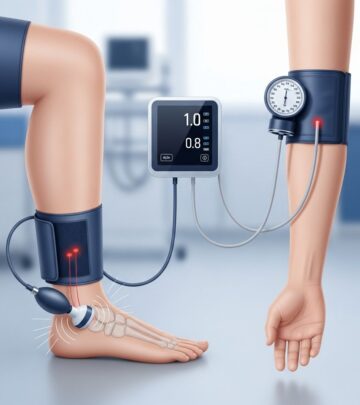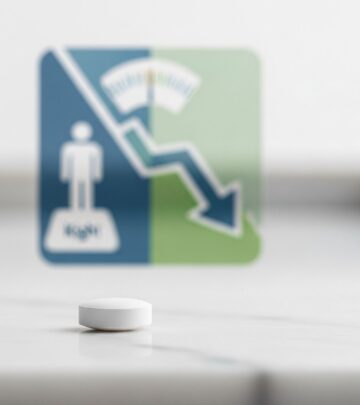Baclofen (Oral Route): Uses, Dosage, Side Effects, and Safety Information
Comprehensive guide on Baclofen oral use, including indications, administration, potential adverse effects, and safety precautions for patients and providers.

Baclofen (Oral Route): Overview
Baclofen is an orally administered skeletal muscle relaxant widely used to treat muscle spasticity and associated pain. Typically prescribed for patients with multiple sclerosis, spinal cord injuries, or other neurological disorders that cause muscle stiffness, Baclofen can help improve mobility and comfort. Available as both tablets and liquid solution, Baclofen works on the central nervous system to alleviate muscle symptoms but does not cure the underlying conditions.
Brand Names and Available Dosage Forms
- Brand Names: Lioresal®, ED Baclofen® (in the US).
- Forms:
- Tablets (5 mg, 10 mg, 20 mg strength)
- Oral Solution (usually 5 mg/5 mL)
Indications and Uses
Baclofen is primarily prescribed to manage:
- Muscle spasticity due to multiple sclerosis, spinal cord injuries, or other spinal cord diseases
- Pain related to muscle spasms
- Associated impaired mobility or discomfort
Beyond these main indications, Baclofen may be used off-label for:
- Trigeminal neuralgia
- Gastroesophageal reflux disease (GERD)
- Intractable hiccups
- Nocturnal leg cramps (esp. with lumbar spinal stenosis)
- Alcohol use disorder management (reducing alcohol cravings and anxiety)
- Short-term pediatric use for cerebral palsy-associated spasticity
Mechanism of Action
Baclofen acts as a GABA-B receptor agonist (gamma-aminobutyric acid receptor), primarily at the spinal cord and within the brain. By enhancing inhibitory pathways and suppressing excitatory neurotransmitter release, Baclofen:
- Reduces muscle spasticity
- Lowers muscle spasms (flexor spasms, clonus)
- Diminishes pain associated with neurological muscle tightness
While Baclofen is highly water-soluble and distributes well throughout the body, oral dosing yields lower drug concentrations in cerebrospinal fluid compared to plasma, which is pertinent for severe cases requiring intrathecal (spinal) administration.
Pharmacokinetics
| Parameter | Detail |
|---|---|
| Bioavailability | 70–85% (oral administration) |
| Peak Plasma Time | 2–3 hours after ingestion |
| Distribution | Volume of distribution: ~0.7 L/kg; low crossing of blood–brain barrier |
| Plasma Protein Binding | ~30% |
Administration and Dosage
General Principles
- Take Baclofen exactly as prescribed (do not change your dose or frequency without medical guidance).
- Oral solution should be measured precisely using an oral syringe.
- Baclofen should be continued even if symptoms improve, unless your provider directs otherwise.
Standard Adult Dosing
- Initial dose: 5 mg three times daily
- Dose increases: By 5 mg every three days, until optimal response
- Typical daily dose: 40–80 mg (in divided doses, maximum 80 mg/day)
Oral Solution Instructions
- Carefully measure each dose with the provided oral syringe
- Ask your pharmacist if you do not receive a measuring device
Pediatric Use
- Baclofen may be prescribed for children over 12 years in selected cases; dosing and safety precautions differ for pediatric patients
- Short-term use in younger children may be permitted for specific conditions (under close monitoring)
Important Safety Information and Precautions
- Do not abruptly stop Baclofen. Rapid cessation may cause withdrawal symptoms, including seizures, fever, confusion, muscle stiffness, or hallucinations.
- Your provider will gradually reduce your dose if discontinuation is necessary.
- Notify your provider if you experience unexpected side effects, changes in muscle tone (flaccidity or increased tightness), mental changes, or other symptoms.
- Regular follow-up is essential to monitor effectiveness and possible adverse reactions.
- Inform your provider if you are pregnant, planning pregnancy, or breastfeeding.
- Discuss all current medications to identify potential interactions.
Possible Side Effects
Baclofen may cause a range of side effects, typically linked to its action on the central nervous system or muscles. Consult your provider if you experience significant issues.
Common Side Effects
- Drowsiness
- Fatigue or weakness
- Dizziness
- Headache
- Nausea
- Confusion
- Insomnia or sleep disturbances
Serious Side Effects (Seek Immediate Medical Attention)
- Severe allergic reactions: rash, itching, swelling, trouble breathing
- Mental or mood changes: hallucinations, severe confusion
- Seizures
- Signs of overdose or withdrawal: hallucinations, muscle rigidity, fever
Drug Interactions
Inform your provider and pharmacist of all medications, supplements, and herbs you use. Baclofen may interact with other drugs that depress the central nervous system (such as alcohol, sedatives, or opioids), increasing sedation and risk of respiratory depression.
Special Populations
| Population | Considerations |
|---|---|
| Children | Prescribed with caution; short-term use only for selected conditions |
| Pregnant or Breastfeeding Women | Discuss risks and benefits with your provider; safety not fully established |
| Elderly | May be more sensitive to side effects, especially drowsiness and confusion |
| Patients with Liver/Kidney Disease | Dosage adjustments may be necessary; monitor carefully |
Missed Dose, Overdose, and Emergency Measures
- Missed Dose: Take as soon as remembered; if near next dose, skip missed dose—do not double.
- Overdose: Symptoms include severe drowsiness, trouble breathing, loss of consciousness, or seizures; seek emergency help immediately.
Proper Storage and Handling
- Store Baclofen at room temperature, away from light and moisture.
- Keep all medications out of the reach of children.
- Safely dispose of discontinued or expired medication as directed by your pharmacist.
Frequently Asked Questions (FAQs)
Q: What is Baclofen used for?
A: Baclofen is primarily prescribed to manage muscle spasticity and pain associated with multiple sclerosis, spinal cord injury, or related neurological disorders.
Q: Is Baclofen habit-forming or addictive?
A: Baclofen is not considered addictive when used as prescribed, but abrupt discontinuation can lead to withdrawal symptoms. Always follow your provider’s instructions.
Q: Can Baclofen make me sleepy or dizzy?
A: Yes, drowsiness and dizziness are common side effects, particularly when starting the medication or after dose increases. Avoid driving or operating heavy machinery until you know how Baclofen affects you.
Q: How long does it take for Baclofen to work?
A: Peak blood levels are reached in 2–3 hours after oral administration, though clinical effects may take several days as the dose is titrated.
Q: Can children take Baclofen?
A: Baclofen may be prescribed for children over 12 years for selected cases, and under strict medical supervision for younger children with cerebral palsy-associated spasticity.
When to Contact Your Healthcare Provider
- Experiencing new or worsening muscle symptoms
- Developing concerning side effects (such as severe drowsiness, confusion, or rash)
- If unsure about your dosing or suspect an overdose
- Before starting or stopping Baclofen
- If you become pregnant or plan to breastfeed
Conclusion
Baclofen is a widely utilized oral skeletal muscle relaxant for managing muscle spasticity, pain, and related neurological symptoms. When taken as directed under medical supervision, Baclofen can significantly enhance comfort and mobility for affected individuals. Routine monitoring, adherence to dosing guidelines, and awareness of possible side effects are essential for the safe and effective use of Baclofen.
Read full bio of medha deb












